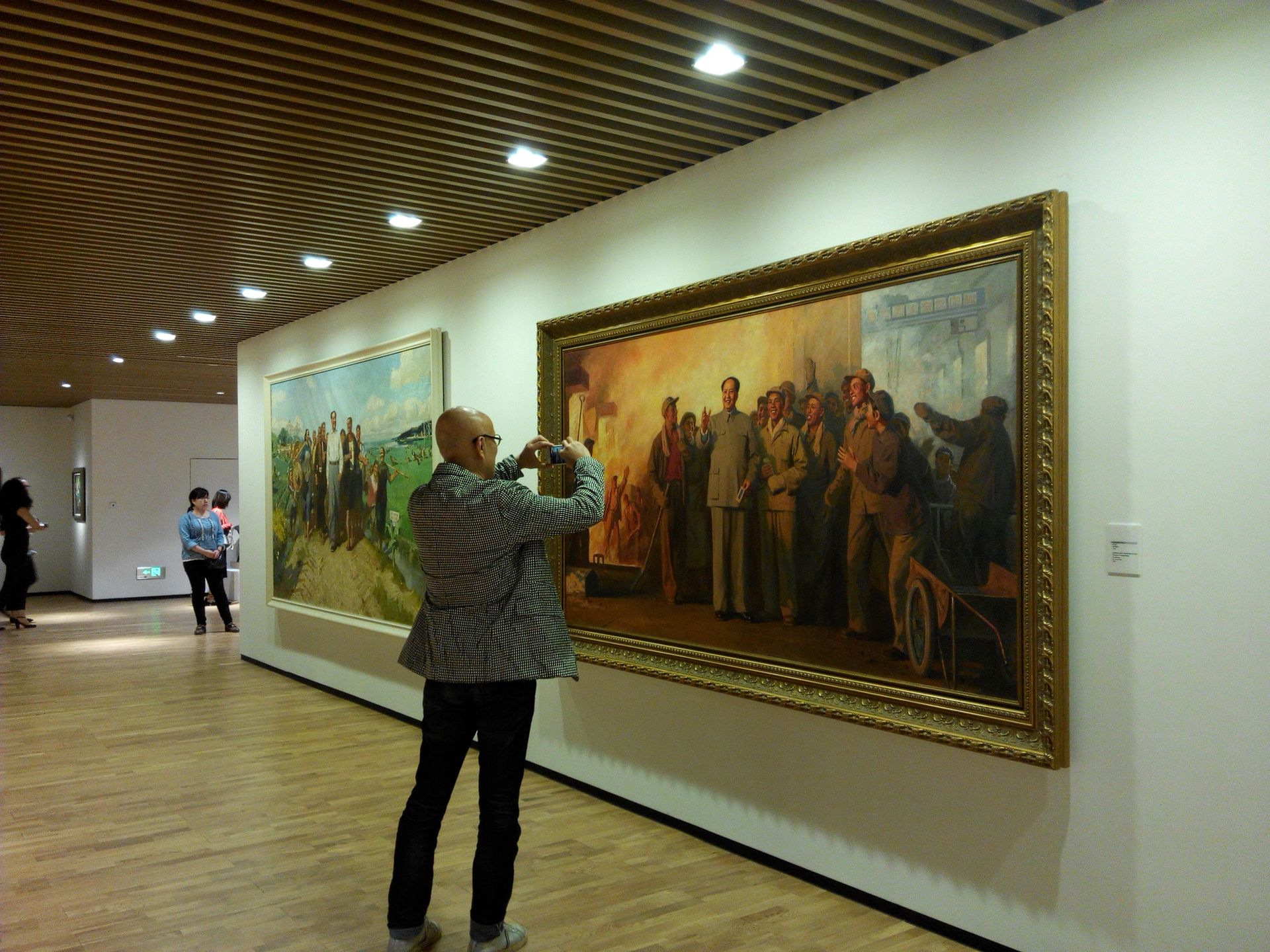The Chinese art collectors Liu Yiqian and Wang Wei last week unveiled the third location of their Long Museum, in the inland megacity of Chongqing—and there are more to come. At the opening on 26 May, Wang announced further plans for a fourth branch due to open in 2018 in Wuhan, the capital of Hubei province.
Long Museum Chongqing is the first outpost beyond the founders’ hometown of Shanghai. It opened with the show 100 Years of Chinese Art (1911-2011), organised by the curator Lv Peng, which traces how the country’s art has paralleled its history since the 1911 Cultural Revolution. The show is drawn from Long’s weighty collections of early Modernist and Maoist-era Chinese art, including paintings of Mao Zedong and idealised peasant life—propaganda images that were mass reproduced by the millions. The works were last shown in 2012, at the opening of the first Long Museum in the Pudong district of Shanghai, but in the industrial heartland of Chongqing they receive a more forthright historical context, with a wall text describing the period as a “devastating hit to China”.

“The opening exhibition is about revolutions and their reverberations,” says the museum’s director Wang Wei. The location fits in with this theme. Today, Chongqing is an independently run city of about 30 million people—China’s most populous. Its position along the Yangtze River has long made it a shipping and manufacturing hub, and it served as the capital during the Japanese occupation of China in the Second World War.
“Chongqing is very beautiful and known as the mountain city because of its hilly landscape. It is an important city in Southwest China,” Wang says. The museum sits across the Yangtze from the state-owned Guotai Art Museum, which opened in 2013 and was modeled after the China Pavilion in the Shanghai World Expo of 2010.
Wang says the Chongqing museum makes Long’s exhibitions accessible to audiences throughout region who would not be able to travel to Shanghai. Wang says she paid particular attention to include noteworthy realist artists from southwest China such as He Duoling, Su Qun, and Luo Zhongli, a Chongqing native and the director of its Sichuan Fine Arts Institute, with which Wang Wei says she is working closely. The show is next due to tour to Wuhan in October, another inland industrial giant where the 1911 Revolution began.
The 12,000 sq m Long Museum Chongqing occupies three floors of the Guohua Financial Centre, which houses offices for companies like Citibank and Yangtze Securities. The building, owned by Liu Yiqian, is part of Chongqing’s developing Jiangbeizui area, which Wang Wei predicts will become the equivalent of Shanghai’s Lujiazui financial district. “State museums are more traditional, but Long Museum is more modern and pluralistic,” says Wang. “China’s elites need a strengthened concept of art. It is of vital importance to put an art museum in the financial center.”
Meanwhile, up next at the Shanghai West Bund location, following the current solo show dedicated to Olafur Eliasson (until June 19), is an all-women show to open on 22 July. “It will be a grand feminist exhibition, with art by women from the Song dynasty to the contemporary era, including overseas women artists, and revolutionary art,” Wang says.
Wang also says Long is working on holding a massive show of its international collection, including Modigliani’s Nu Couché (1917-18), which Liu Yiqian bought for $170.4m at Christie’s New York in November 2015. “Long Museum’s ambition is to become a global museum. We do not want to be rich people who monopolise these masterpieces: rather we want to contribute to international exchange, by bringing western art to the Chinese people.”

